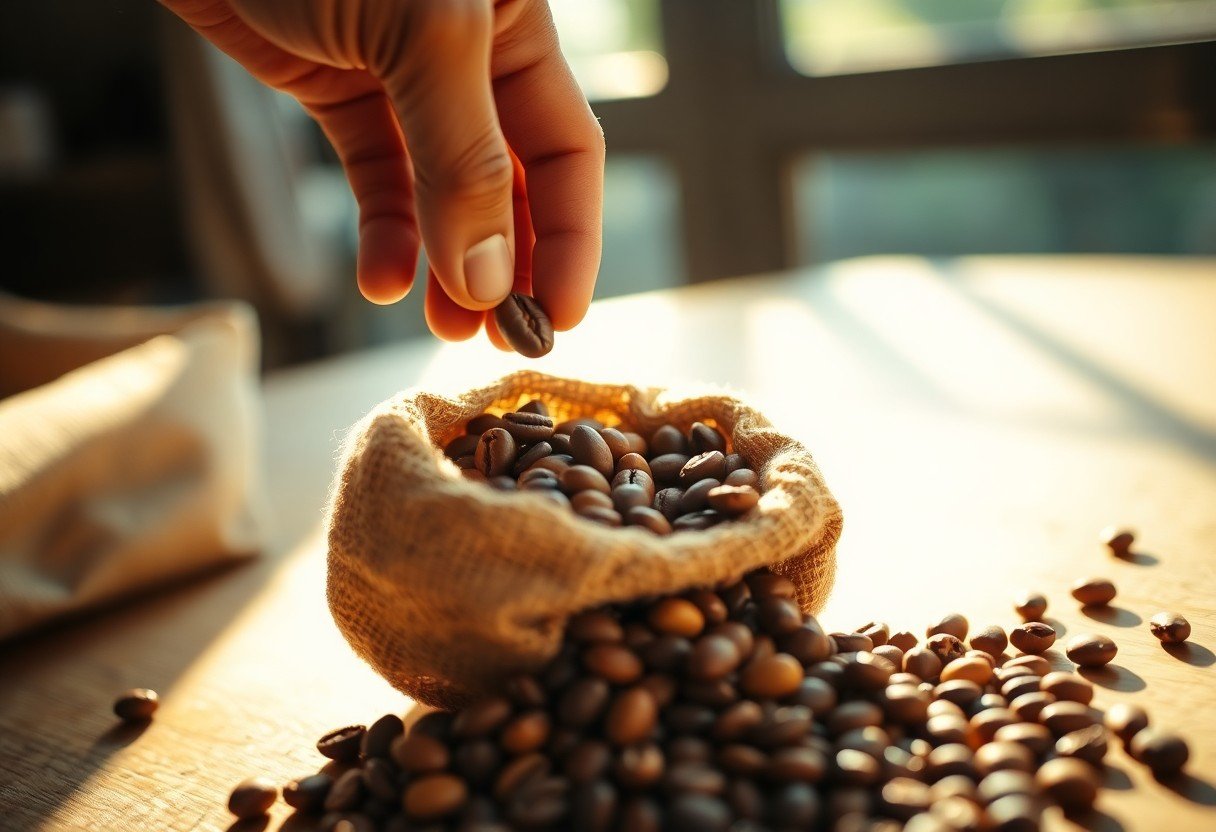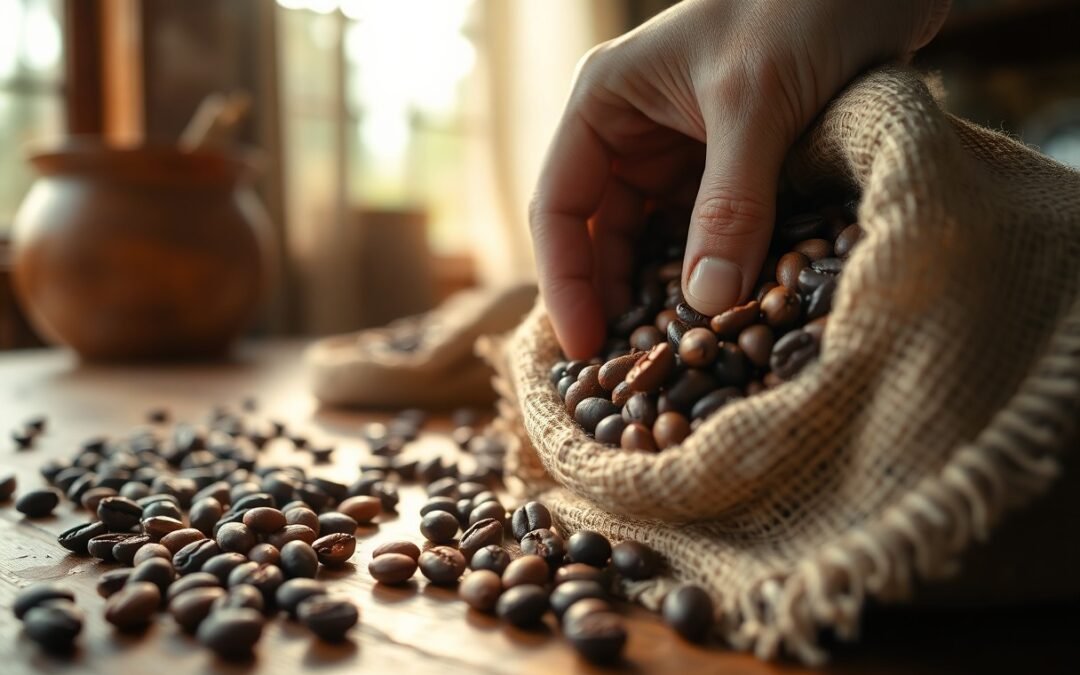Selection is key to unlocking the perfect coffee experience tailored to your preferences. With countless varieties and roasting methods available, it can be overwhelming to choose the right fresh roasted coffee beans. In this guide, you will learn simple yet effective steps to identify the flavor profiles and qualities that best suit your taste. By understanding the distinctions between bean origins, roast levels, and freshness, you’ll be empowered to make informed decisions that elevate your coffee enjoyment to new heights.
Understanding Coffee Beans
Before stepping into the world of coffee, it’s imperative to understand the foundation of your brew, which lies in the beans themselves. Coffee beans are the seeds of the Coffea plant and come in various types, each contributing to distinct flavor profiles and characteristics. By recognizing the attributes of different beans, you can better appreciate how to select those that fit your palate perfectly.
Different Types of Coffee Beans
One of the first steps is to familiarize yourself with the main types of coffee beans:
- Arabica: Known for its sweetness and complexity.
- Robusta: Offers a strong, bold flavor and higher caffeine content.
- Libérica: Features a unique, floral aroma with a fruity taste.
- Excelsa: Delivers dark, fruity flavors and a hint of tartness.
- Combine blends: Often bring together multiple bean types for balanced profiles.
Perceiving the nuances in these beans can greatly enhance your coffee experience.
| Type | Flavor Profile |
| Arabica | Sweet, complex |
| Robusta | Bold, strong |
| Libérica | Floral, fruity |
| Excelsa | Dark, tart |
The Importance of Freshness
Coffee is at its best when the beans are fresh. The freshness of your coffee beans directly influences the aroma and flavor of your cup. Once roasted, beans start losing their flavor and aroma, so choosing freshly roasted beans is key to enjoying a rich and vibrant coffee experience.
Understanding the importance of freshness cannot be overstated. Coffee beans begin to oxidize and degrade in flavor soon after they are roasted. The ideal time to consume fresh roasted beans is within two to three weeks post-roasting, as this period allows for optimal flavor development. You should also store your beans properly, in an airtight container away from light and heat, to maintain their freshness for as long as possible. Selecting freshly roasted coffee beans enables you to fully appreciate the complexities and nuances in your brew.
How To Assess Your Taste Preferences
You have a unique palate, and understanding your taste preferences is important for selecting the right coffee. Start by considering the flavors and aromas you enjoy in other beverages, such as tea, wine, or even chocolate. Pay attention to whether you lean towards sweet, fruity, nutty, or bold flavors, as this can help guide your coffee choices. Don’t hesitate to explore different roasts, as the beans’ origin, processing method, and roast level can significantly influence flavor. The more you learn about your preferences, the better your coffee selection process will become.
Identifying Flavor Profiles
While assessing your coffee preferences, it helps to identify specific flavor profiles that appeal to you. Consider tasting a range of coffees from different regions, as each origin tends to produce distinct flavor notes. For instance, Central American coffees often have bright acidity and fruity flavors, while those from Africa are known for their floral and berry notes. Try to pinpoint which profiles resonate with you, and note your experiences. This will aid in narrowing down your options when shopping for fresh roasted coffee beans, ensuring a more satisfying cup every time.
Experimenting with Brews
Brews offer a fantastic opportunity to explore different ways to prepare coffee and discover how brewing methods influence flavor. Each brewing technique—whether it’s pour-over, French press, or espresso—extracts flavors differently. Take the time to experiment with various methods, adjusting variables like grind size, water temperature, and brew time to find the perfect balance for your taste preferences. This hands-on approach will not only enhance your coffee experience but also help you appreciate the nuances in flavor that different beans have to offer.
HowTo make the most of your brewing experiments begins with understanding how each method affects the taste of your coffee. For instance, using a coarser grind in a French press can result in a fuller body, while a finer grind for espresso produces a concentrated shot with intense flavors. Keep a brewing journal to track each experiment, noting your grind settings, brew times, and the resulting taste. Over time, you will refine your technique and uncover preferences that align with your unique palate, making your coffee enjoyment all the more rewarding.
Tips for Choosing Quality Roasted Coffee
While selecting quality roasted coffee, consider these vital tips to enhance your coffee experience:
- Buy from reputable sources or local roasters.
- Check the roast date for freshness.
- Opt for whole beans over pre-ground coffee.
- Explore different roast levels to find your preference.
- Pay attention to certifications like organic or fair trade.
Knowing how to evaluate these aspects will help you choose the best beans tailored to your taste.
Visual Cues of Freshness
Clearly, the appearance of the coffee beans can indicate their freshness. Look for beans that are shiny, as this sheen is a sign of recent roasting. Freshly roasted beans often have a light residue of oil on their surface, while older beans tend to be dry and dull in color. Additionally, examine the beans for any inconsistencies in size and color, as uniformity typically suggests quality processing.
Aroma and Taste Testing
Cues from aroma and taste play an vital role in selecting coffee. Take the time to smell the beans, as a rich and inviting aroma usually indicates freshness and quality. When brewing, pay attention to the flavor profile—decide whether you prefer sweet, fruity, nutty, or bitter notes.
A coffee’s aroma is a powerful indicator of its flavor potential. To fully experience this, grind a small amount of coffee and inhale deeply; the scent should be vibrant and complex. When tasting, allow the coffee to linger on your palate, noting the various tasting notes. This sensory evaluation can guide you to find beans that suit your delicacies, enhancing your overall enjoyment of your coffee selection.
Factors Influencing Coffee Quality
All the factors that influence coffee quality can significantly alter your coffee experience. When choosing the perfect roast, consider the following:
- Beans’ origin
- Processing methods
- Roast level
- Storage conditions
- Freshness
Any one of these factors can drastically impact the flavor profile and overall quality of your coffee.
Sourcing and Origin
To select the finest coffee beans, you should pay attention to their sourcing and origin. Different regions produce beans with distinct flavor notes due to variations in climate, soil, and altitude. For example, beans from Ethiopia may offer fruity and floral notes, while those from Brazil could deliver nutty and chocolatey undertones. Understanding where your beans come from can help you choose a roast that aligns with your taste preferences.
Roasting Techniques
For the best flavor, the roasting techniques employed can make all the difference. The roast level—light, medium, or dark—determines the intensity and flavor profile of your coffee. Each roasting technique brings out unique characteristics in the beans, such as acidity, sweetness, and aroma.
Factors such as time and temperature play a pivotal role in the roasting process. Light roasts maintain more of the beans’ original flavors, ideal for highlighting intricate tasting notes. Medium roasts strike a balance, offering a mix of acidity and body. Dark roasts, on the other hand, emphasize bold flavors and diminish acidity. Understanding these techniques empowers you to select coffee that best complements your palate.
How-To Store Your Coffee Beans
After you’ve selected the perfect coffee beans, it’s important to store them properly to maintain freshness. One of the best practices is to seal them in an airtight container and keep them in a cool, dark place. For more guidance, check out these 3 tips on how to select the right coffee beans for you.
Best Practices for Freshness
One effective way to safeguard the freshness of your coffee is to buy in small batches and consume them within a few weeks. This ensures that you’re always enjoying beans at their peak flavor.
Containers and Environment
One important factor in maintaining the quality of your coffee beans is choosing an appropriate container and environment for storage. An airtight, opaque container can help shield your coffee from light, moisture, and air, all of which contribute to flavor degradation.
Practices like using a glass or ceramic jar with a tight-fitting lid can go a long way in preserving your coffee’s unique aromas and flavors. Avoid storing in the original packaging, as it’s often not designed to keep coffee fresh long-term. If possible, find a spot away from heat sources, such as stoves or ovens, to further protect your beans.

Tips for Brewing the Perfect Cup
Once again, brewing a delicious cup of coffee is an art that can be refined with a few imperative tips. Start with high-quality fresh roasted beans, experiment with different brewing methods, and pay attention to precise measurements. Here are some tips to keep in mind:
- Use filtered water for better taste.
- Measure your coffee and water; a general ratio is 1:15.
- Keep your brewing equipment clean.
- Experiment with steeping times for optimal flavor.
Knowing these tips will help you enhance your coffee experience. For more insights, check out Coffee Beans: How To Choose, The Best Ones To Try.
Grind Size and Brewing Method
If you’re looking to elevate your coffee experience, understanding the relationship between grind size and brewing method is imperative. Different brewing techniques require specific grind sizes to extract the perfect flavor profile. For example, a coarser grind works best for French Press, while a fine grind is ideal for espresso. Adjusting the grind size can significantly impact the taste of your brew.
Water Quality and Temperature
An imperative yet often overlooked aspect of brewing is the quality and temperature of the water you use. The right temperature helps to bring out the best flavors in your coffee. Below is a breakdown of the recommended water quality and temperature:
| Aspect | Recommendation |
|---|---|
| Water Type | Use filtered or bottled water |
| Temperature | 195°F to 205°F (90°C to 96°C) |
The impact of water quality and temperature on your coffee cannot be overstated. Water that is too hot can scorch the coffee, while water that is too cold may under-extract the flavors. Ensuring you use quality water and maintain the correct temperature will not only enhance the taste of your coffee but also bring out its unique characteristics. Follow these guidelines for consistently great results.
Summing up
From above, selecting the finest fresh roasted coffee beans for your taste involves understanding your flavor preferences, exploring different roast levels, and considering the origin of the beans. You should also pay attention to freshness and aroma, as these factors significantly impact your coffee experience. Taking the time to experiment with various beans and blends will help you discover the perfect cup that delights your palate. Trust your taste and enjoy the journey of finding your ideal coffee.

